A Consumer Guide to the Trailing Edge: May, 2012
Recycled Goods (#97)
by Tom Hull
If not for In Series this month I would have had a record low 9 albums. With it, I have 55, the most since October 2009, when I did an In Series of Verve reissues and wound up with 72 records. This month's special is more esoteric, but I felt like exploring it for two reasons: one is that Norwegian bassist Ingebrigt Håker Flaten relates to a number of interesting connections in recent jazz -- as it turns out, more than I expected; the other is that the example of making so much music easily available for streaming. Even though I hear a lot more jazz than almost anyone, this filled in a lot of holes and gave me a much more measured understanding of Flaten. And for you this gives you a fair chance to poke around, see what appeals, avoid what doesn't. I'd like to see more resources open up like this. In fact, I'd like to see a whole different economic model for jazz, but that's another essay.
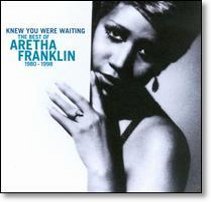 |
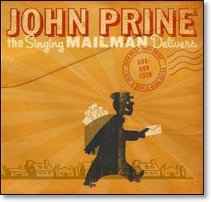 |
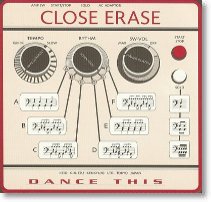 |
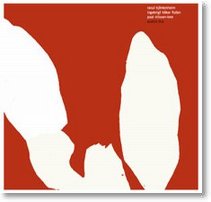 |
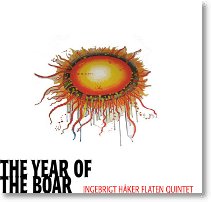 |
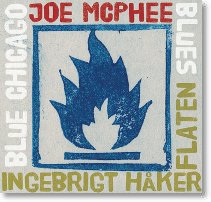 |
Aretha Franklin: Knew You Were Waiting: The Best of Aretha Franklin 1980-1998 (1980-98 [2012], Arista/Legacy): It's tempting to say don't bother with anything outside the first half of her Atlantic period, say 1967-72, when her Muscle Shoals band finally got her legendary church-school voice to moving with a newfound sex appeal. Her earlier records never seemed to inspire her. She hung on at Atlantic through La Diva in 1979, but she did have something of a second wind after moving to Arista in 1980, largely because her producers worked to find her a groove. The high point there was 1985's Who's Zoomin' Who?, and its songs stand out here: especially "Sisters Are Doin' It for Themselves," one of six songs here pairing her with other stars. It's the sort of strategy that sometimes works for an aging legend, and Franklin has always been able to dazzle you with her voice, except when the arrangement didn't deserve her. These can be marginal, and on average don't top the rest of Who's Zoomin' Who?, but the broader focus shows you should never count her out. A-
Janis Joplin: The Pearl Sessions (1970 [2012], Columbia/Legacy, 2CD): Her second, and last, solo album, Pearl was never very satisfactory, torn between her big crossover single (Kris Kristofferson's pop-perfect "Me and Bobbie McGee" b/w her singularly brilliant a cappella "Mercedes Benz") and her typical blues wail, both backed by the well-named but merely professional Full-Tilt Boogie. But mostly she was dead and unsettled: her hit never got her a TV show or a career in Vegas, but her legend has become so secure that her two Big Brother albums are now fully hers -- much like Billie Holiday's name now appears on all those old Teddy Wilson records. All you really need is Columbia's 3-CD Janis box (released in 1993, and now out-of-print), which expanded the two Big Brothers and the two solo albums with demos and outtakes and lots of live scraps to make a coherent whole. The individual albums are always iffier -- which is why Box of Pearls (from 1999, and still in-print) always struck me as a dubious proposition -- but this is Legacy's second attempt to put new lipstick on Pearl. In 2005 they released a 2-CD Legacy Edition which tacked on live shots. This time they've delved into the outtakes -- five takes of "Move Over," four each "Me and Bobby McGee" and "Get It While You Can," still just the one and only "Mercedes Benz" -- plus some studio chatter. It's massively redundant, but one standout on the second disc is "A Woman Left Lonely" (alternate vocal 9.9.70), and the instrumental take of "Pearl" makes for a nice coda. A- [R]
John Prine: The Singing Mailman Delivers (1970 [2011], Oh Boy, 2CD): Prehistory and trivia, the sort of thing that might get tacked onto a 2-CD "deluxe" reissue of his 1971 debut John Prine, except that Prine owns the tapes and decided to release them himself. In 1970, Prine was working as a mailman during the week and playing weekend nights at the Fifth Peg in Chicago. In August, he recorded solo demos of 11 songs -- the first disc here. The second is the tape of a live performance, backed by bass guitar, with 12 of his songs (mostly repeats) plus a Hank Williams medley. Some songs were works in progress -- "Sam Stone" was still titled "Great Society Conflict Veteran's Blues." His studio album has more twang and polish -- and is certainly the one to start with -- but there is something to be said for the urgency of these demos. B+(***)
In Series:
Early last month I was surfing through the "jazz" label at Bandcamp and ran across an obscure Ken Vandermark album from 2000, Double or Nothing, attributed to AALY Trio/DKV Trio. It's something I've heard before and don't regard all that highly: AALY Trio was Mats Gustafsson's pre-Thing powerhouse, and DKV stood for Hamid Drake, Kent Kessler, and Vandermark -- a very good combo at the time, but the mash up exploded and left shrapnel everywhere. Still, I went looking to see what else could be found in the neighborhood, and found a treasure trove.
Bassists are among the most unherald heroes of jazz. I started paying close attention one night watching Reggie Workman play with Mal Waldron, and I've kept an ear cocked ever since. My major find, of course, was William Parker, but I've noticed a lot of superb bassists over the last few years. One I've run into quite a bit without paying much heed to was Ingebrigt Håker Flaten, b. 1971 in Norway, now based in Austin, with 113 recordings (as best I can figure) since 1994. In a remarkable piece of self-promotion, and for that matter public service, Flaten has managed to put 62 complete albums up on Bandcamp where you can stream and/or purchase. They not only give you a detailed picture of his art, they provide a remarkable cross-section of what's happened in the Norwegian jazz scene over the last two decades -- folk jazz, jazztronica, punk jazz, and avant projects ranging from a Jimmy Giuffre tribute project to sheer noise. Early on he played with young musicians like Trygve Seim, Christian Wallumrød, Pettre Wettre, Bugge Wesseltoft, and South African Zim Ngqawana. Around 2000 he anchored three new groups that have proven to be among the most durable in Norway: Atomic, Scorch Trio, and The Thing, in both cases paired with drummer Paal Nilssen-Love. Those in turn led by two Ken Vandermark projects: School Days and Free Fall, both named for pivotal early-1960s records (by Steve Lacy/Roswell Rudd and Jimmy Giuffre). That led to occasional meetings with Joe McPhee, Evan Parker, and others. All along Flaten continued to be the first call bassist for other less famous Norwegian horn players -- Frode Gjerstad, Håkon Kornstad, Atle Nymo, Jon Klette, Gisle Johansen, Axel Dørner. As you will see, the records add up.
I've gone through and listened to and jotted down notes on everything Flaten put up on Bandcamp that is complete and that I hadn't heard before. This was all done one-pass, and it does tend to run together a bit -- especially the many Atomic and Thing albums. Good chance a couple of the high B+ records would grow on me if given time. The stuff I had heard before is listed afterwards, with my previous grades. And I've also fleshed out the discography that isn't at Bandcamp, some with grades, some still unheard. I also checked Rhapsody to see if they had anything that wasn't on Bandcamp, and came up with two Bugge Wesseltoft albums.
I listed the albums in the order they were recorded in (or where lacking a recording date I used release date, which throws the order off a bit; for more details see the listing cited above). This is followed by several lists that complete the discography. (Of course, it will be incomplete as soon as the next record drops -- probably The Cherry Thing, where The Thing meets Neeneh Cherry.)
The Source: Olemanns Kornett (1994, Curling Legs): Norwegian saxophonist Trygve Seim's group, both its/his first outing and Flaten's. Øyvind Broekke's trombone provides contrast, and the two in sync are a fun combo, both joyous and comic, while their dicing fractures the free jazz space. B+(**) [bc]
SAN Featuring Zim Ngqawana: San Song (1995 [1997], Nor CD): South African saxophonist, won a scholarship to the US, studied under Archie Shepp and Yusef Lateef, somehow got routed back through Norway on his return, where he died in 2011. Paired here with saxophonist Bjørn Ole Solberg, backed by Andile Yenana on piano, Flaten on bass, and Paal Nilssen-Love on drums, they bury any hint of sax jive in a mainstream turn that grows to smoldering intensity. B+(***) [bc]
Motorpsycho, the Source & Deathprod: Roadwork Vol. 2: The Motor Source Massacre: Live at Konigsberg Jazz Festival 1995 (1995 [2000], Stickman): Motorpsycho is a Norwegian metal band (named for the Russ Meyer movie), prolific since 1990 including four Roadwork volumes; The Source was saxophonist Trygve Seim's group, including Flaten at the time; Deathprod is Helge Sten, credited with theremin and "audio virus" here, later a regular with the band. Playing for a jazz crowd, the rock group plays long vamps the jazzers can improv on; the 22:06 "The Wheel" sounds something like Ornette Coleman over Neil Young if neither star shorted out (or maybe the young John Surman over Flipper with a side of Krautrock). B+(***) [bc]
Close Erase: Close Erase (1995 [1996], Nor CD): Piano trio, with Per Oddvar Johansen on drums and future ECM regular Christian Wallumrød on piano. Flaten jumps right in and keeps the bass in the center of the flow, the piano responding as sharper and more oblique. B+(***) [bc]
Element: Element (1996, Turn Left Production): Sax-piano-bass-drums quartet, with Gisle Johansen on soprano and tenor, backed by the Wiik/Flaten/Nilssen-Love rhythm section; Wiik makes a strong impression here, with solid comping and some flash in his solos, and Johansen is always pushing and prodding -- wonder why he hasn't had more of a career? B+(***) [bc]
Close Erase: No. 2 (1998 [1999], Nor CD): Flaten wrote two songs, and drummer Per Oddvar Johansen three, but this piano trio set is more characteristic of Christian Wallumrød than the group's debut. Piano out front, featuring tight melodic lines, with the bass and drums falling neatly into the new order. B+(**) [bc]
Element: Shaman (1998 [1999], BP): Sextet, adds two more front-line horns -- Petter Wettere (saxes) and Vidar Johansen (bass clarinet) -- to Gisle Johansen's sax quartet, adding harmonics and depth without thrashing or dimming the free jazz feistiness; pianist Wiik helps steady the group, but his solos are more conventionally melodic. B+(***) [bc]
Zim Ngqawana: Ingoma (1999 [2000], Sheer Sound): Band here includes two Norwegians -- Flaten and drummer Paal Nilssen-Love -- plus poet Lefifi Tladi and South Africans on trumpet and piano; some jazz, some jive, some chant, some verse, a pretty good drum solo. B+(*) [bc]
The Electrics: Chain of Accidents (2000 [2001], Ayler): Free jazz quartet, two horns -- Sture Ericson (tenor sax, clarinet, bass clarinet) and Axel Dørner (trumpet, slide trumpet) -- in front of Flaten on bass and Raymond Strid on drums. The horns rarely fly apart or play in synch; more often they grate against each other, a rat-a-tat the rhythm plays off of. B+(*) [bc]
Close Erase: Dance This (2001, BP): On this piano trio's second album, Christian Wallumrød seemed to be heading toward where he would wind up on ECM, but this is a radical detour unlike anything else in his discography: electric keyboards, Fender bass, drum machines. The two-part title cut is a dare, far wilder than any jazztronica I can recall. The four-part "Zoo Zolitude" eases up on the pace but doesn't go easy. A- [bc]
Bugge Wesseltoft: New Conception of Jazz: Moving (2001, Jazzland): Pianist, mostly Fender Rhodes and synths, introduced his "new conception" in 1997 and recycled the title four more times through 2004, this the middle entry; don't know if the earlier albums are this grooveful, and the last piece does tail off into simple figures, but the early ones were reminding me of Bohannon minus the fake strings, cleaner and a bit more abstract -- with jazz the dancefloor is in your mind. B+(***) [R]
No Spaghetti Edition: Listen . . . and Tell Me What It Was (2001, Sofa): A large group, or maybe two given that bass-drums-guitar-reeds are doubled up, identified by channel; the others, aside from Frode Haltli on accordion, are credited with electronics in addition to voice (Maja Ratkje), piano (Pat Thomas), and trumpet (Axel Dørner); group improvs, some have trouble getting going, but "If Mountains Could Sing" could make you a believer. B+(*) [bc]
Atomic: Feet Music (2001, Jazzland): First album by the long-running Norwegian group: Magnus Broo (trumpet), Fredrik Ljungkvist (tenor/soprano sax), Håvard Wiik (piano), Flaten, and Paal Nilssen-Love (drums); ranges from a piano-led ballad ("Longing for Martin") to funk with horn breaks ("Do It") to free-flying chaos ("Den Flyktiga Magneten"), and back again, as if everything were possible. B+(***) [bc]
Raoul Björkenheim/Ingebrigt Håker Flaten/Paal Nilssen-Love: Scorch Trio (2002, Rune Grammofon): Guitar-bass-drums trio, aptly named as the guitar builds up feedback, but sometimes the bass generates as much noise, and the drummer can always make himself heard. A- [bc]
Atomic: Boom Boom (2002 [2003], Jazzland): Second album, an especially strong outing for trumpeter Magnus Broo, with more of Håvard Wiik's eloquent piano; nothing very far out, just a group with a lot of ideas and talent. B+(***) [bc]
Ingebrigt Håker Flaten: Double Bass (2002-03 [2003], Sofa): Solo bass record, a rite of passage for all avant-garde bassists, even though the instrument limits the prospects. Some arco, but doesn't dwell on it, and doesn't knock the box about for a bit of percussion. Rather, he sticks with the fat notes that give the bull fiddle its inate musicality. B+(**) [bc]
Bugge Wesseltoft: New Conception of Jazz: Live (2003, Jazzland): Hard to sort out the scant available data on this, probably picked out from multiple live dates, the occasional hints of guitar most likely the work of John Scofield, but Wesseltoft's jazztronica is too spartan to overly indulge him, built from programmed percussion, keybs, and two bassists -- Marius Reksjø on electric, Flaten on both. B+(**) [R]
Cato Salsa Experience and The Thing with Joe McPhee: Sounds Like a Sandwich (2004 [2005], Smalltown Superjazz, EP): Norwegian rock group led by vocalist-guitarist Cato Thomassen (aka Cato Salsa); adding The Thing doubles up on bass and drums, plus Mats Gustafsson and fellow traveler Joe McPhee on sax; five cuts, Led Zeppelin ("Whole Lotta Love") and Yeah Yeah Yeahs ("Art Star") played for noisy raunch, Donald Ayler ("Our Prayer") an oblique hymn, also noisy, and two originals that remind me of the Angry Samoans as much as anyone else; 5 cuts, 19:47. B+(**) [bc]
Atomic: The Bikini Tapes (2004 [2005], Jazzland, 3CD): Live shots from a tour around Norway, deep enough into their book they can log 153:37 with only three dupes ("Boom Boom," "Kerosene," and "Alla Dansar Samba Till Tyst Musik"); the horns can twist, turn, and cut, while pianist Håvard Wiik comps free or waxes melodic -- a marvelous band even if they never quite put it all together; too much to sort out in one pass, so just let it flow. B+(***) [bc]
Trinity: Sparkling (2004, Jazzaway): Sax trio, with Kjetil Møster leading, Thomas Strønen on drums; Møster is another free jazz saxophonist who can hold center stage and push the envelope, although he's equally touching in a slow (and relatively quiet) duo with the bassist. B+(**) [bc]
Atomic: Happy New Ears! (2005 [2006], Jazzland): The Magnus Broo-Fredrik Ljungkvist quintet, going through a phase where mostly they slowly paint tones and admire the colors, which does draw the bass up in the mix; not all they do, of course -- Wiik gets out ahead and runs with it, but the barnburners fizzle. B+(*) [bc]
Michiyo Yagi/Ingebrigt Håker Flaten/Paal Nilssen-Love: Live! At Super Deluxe (2005 [2006], Bomba): Yagi plays electroacoustic 21- and 17-string koto, a string instrument with a banjo-like twang but much more refined -- a natural pairing for Flaten's bass. B+(**) [bc]
Ingebrigt Håker Flaten Quintet: Quintet (2005 [2006], Jazzland): On Flaten's first shot at a group record, he adds compatible string instruments -- Ola Kvernberg's violin and mandolin, Anders Hana's guitar -- which shoots the trajectory of his bass riffs right into the stratosphere, a very effective approach. Klaus Ellerhausen Holm plays clarinet, alto and bari sax, sometimes for compatible color, sometimes for the shriek, while drummer Fredrik Rundqvist pushes the beat. B+(***) [bc]
Atle Nymo/Ingebrigt Håker Flaten/Håkon Mjåset Johansen: Play Complete Communion (2006 [2008], Bolage): Nymo (tenor sax) and Johansen (drums) play in a band called Motif, but otherwise don't have a lot of records. Complete Communion is a 1965 album by Don Cherry, who's much revered in Scandinavia, a script that keeps this neatly on track while letting everyone play, which is the point. B+(***) [bc]
Ingebrigt Håker Flaten Quintet: The Year of the Boar (2007 [2008], Jazzland): Ever since Mingus, most bassists lead off their own albums, but the first sound you hear here is Ola Kvernberg's violin, the continuity from Flaten's previous Quintet; the rest of the band this time are subs from Chicago -- Frank Rosaly on drums, Jeff Parker on guitar, and Dave Rempis on various saxes; Kvernberg, Parker, and especially Rempis have strong solo spots, but the high point is the rising tide in "Prayer," dedicated to Flaten's father, and a free metal power ballad for George Russell. A- [bc]
Atomic: Retrograde (2007-08 [2008], Jazzland, 2CD): Originally released in a 3-CD box along with Live in Seattle, but broken apart for digital purposes, leaving 2 studio discs, 96:49 of backard-looking new music, the sort of thing they've been doing all along, but so much it starts to cancel itself out. B+(**) [bc]
The Thing with Otomo Yoshihide: Shinjuku Crawl (2007 [2009], Smalltown Superjazz): Yoshihide is a guitarist from Japan, has a huge discography since 1981 -- AMG lists 62 albums -- of which I know next to nothing, but when guitarists join Mats Gustafsson's monster trio they usually want to gnash and bash, and there's a lot of that here, most impressively when the bari comes out; in between there's some interesting intricate guitar that merits further research. B+(**) [bc]
The Thing with Jim O'Rourke: Shinjuku Growl (2008 [2010], Smalltown Superjazz): Recorded live one day after the set with Otomo Yoshihide, the Sonic Youth guitarist adds to the noise but offers not much else; in a couple spots Gustafsson manages to break out of the rut, but mostly he roots in it. B [bc]
Ingebrigt Håker Flaten: Birds: Solo Electric (2007-08 [2012], Tektite): Solo electric bass guitar, two sessions, six cuts, totals 30:57 barely topping EP range. Second cut introduces some strum, but mostly Flaten is interested in the knobs, experimenting with feedback more successfully than Metal Machine Music. B+(*) [bc]
Joe McPhee/Ingebrigt Håker Flaten: Blue Chicago Blues (2007 [2010], Not Two): Tenor sax-bass duets, dedicated to the late Fred Anderson on its release but cut a few years earlier, in Chicago, but in some other bar; still, two (of six) titles check the blues; McPhee's tenor sax is reminiscent of Anderson's fierce early phase (but a bit more practiced), and Flaten can rise to his volume -- although it's just as interesting when they chill down. A- [bc]
Atomic: Live in Seattle (2008, Jazzland): Live set, originally released as part of the Retrograde box, now broken out. Four (of six) cuts repeat from Retrograde, a bit rougher, of course. B+(*) [bc]
IPA: Lorena (2008 [2009], Bolage): Quartet, with Atle Nymo (tenor sax, bass clarinet) and Magnus Broo (trumpet) up front, backed by bass (Flaten) and drums (Håkon Mjåset Johansen); nice spots from all concerned, especially the bassist, but maybe too nice -- it's almost like the horns are serenading each other. B+(*) [bc]
Ingebrigt Håker Flaten/Håkon Kornstad: Elise (2008, Compunctio): Bass-tenor sax duo, everything taken at a ballad pace, quiet enough that Kornstad's fingering comes through as percussion; an equally slight vocal starts off, attributed to Elise Flaten. B+(**) [bc]
Circulasione Totale Orchestra: Open Port (2008 [2009], Circulsasione Totale): Large improv group dating back to 1984, the main constant and presumed leader Frode Gjerstad (sax, clarinets), 13 strong here -- some name players here: Bobby Bradford, Sabir Mateen, Kevin Norton, Louis Moholo-Moholo -- including guitar, tuba, vibes. An improv in four parts, a lot of percussive thrash, Lasse Marhaug's electronics, always something new happening. B+(**) [bc]
Bobby Bradford/Frode Gjerstad/Ingebrigt Håker Flaten/Paal Nilssen-Love: Reknes (2008 [2009], Circulasione Totale): A set from the Molde Jazz Festival where cornet player Bradford finds a very compatible Norwegian pick-up band, paired off against Gjerstad's sax and clarinet; free improv, the four sections simply numbered, Bradford impressive from the start, Gjerstad closes in. B+(***) [bc]
Joe McPhee/Jeb Bishop/Ingebrigt Håker Flaten/Michael Zerang: Ibsen's Ghosts (2009 [2011], Not Two): Title will likely be the group name next time they get together; McPhee only plays tenor sax here, and the trombone tends to slow him down and flatten everything out, not that the slower tempos are unwelcome; cf. the superior McPhee/Zerang duo from the same year, Creole Gardens (A New Orleans Suite) (NoBusiness). B+(*) [bc]
Ingebrigt Håker Flaten/Håkon Kornstad/Jon Christensen: Mitt Hjerte Altid Vanker - I: Live at Oslo Jazzfestival (2009 [2011], Compunctio): The sax-bass duo augmented by the veteran drummer, who has a light touch which doesn't undercut the solemnity of the set, keyed as it is to a traditional hymn; the sax could easily overrun the bass but doesn't, preferring an even dialogue. B+(**) [bc]
Atomic: Theater Tilters Vol. 1 (2009 [2010], Jazzland): Starts rousing, but settles into a norm which nicely showcases the individual talents without toppling things over; "Bop Apart" is a gas, but they shut it down at 3:26, whereas everything else drags out to 9-11 minutes. B+(**) [bc]
Atomic: Theater Tilters Vol. 2 (2009 [2010], Jazzland): Having encounted this group initially on their mash-ups with Ken Vandermark's School Days -- joined at bass and drums by Flaten and Nilssen-Love -- I figured them to be noisier than their remarkably balanced albums proved to be, but here at least they bring the volume (and the pace) up a level, and that works for them, especially in front of a crowd. B+(***) [bc]
Remi Álvarez/Ingebrigt Håker Flaten: First Duet Live (2010 [2012], JaZt Tapes): Avant saxophonist from Mexico, not sure how much he has produced but I am fond of his duo with bassist Mark Dresser. Recorded in Austin, where Flaten has established a base, three improv duos tend to ride rough but are most satisfying at their most moderate. B+(*) [bc]
IPA: It's a Delicate Thing (2010 [2011], Bolage): Starts with an indelicate thrash, then they make nice, then the two horns -- Atle Nymo's tenor sax and Magnus Broo's trumpet -- finally start to build on each other, at least when driven by the drummer. B+(**) [bc]
Dennis González/Ingebrigt Håker Flaten: The Hymn Project (2010 [2011], Daagnim): Not a duo but pitched like one -- the González sons on second bass and drums, Henna Chou on cello -- running through five trad hymns, three American and two Norwegian, plus an original; the trumpet plaintive, the bass deep and soulful, the closing vocal a psalm. B+(**) [bc]
Ingebrigt Håker Flaten: Steel: Live in Bucharest (2010 [2012], Tektite, EP): Solo bass, one piece in four parts, runs 22:50 so I'm calling it an EP, but longer rarely does more than test your patience with solo bass. This goes as deep as you'd like into the piece, remarkable in its musicality as well as the usual catalogue of effects. B+(***) [bc]
The Thing: Mono (2011, Smalltown Superjazz): Short (34:17), slightly understated with more growl than bite, neither of which are necessarily demerits for a band committed to overkill; still, I wonder if the final piece title is self-criticism: "There Is Shitloads of Red Meat Missing." B+(*) [bc]
Atomic: Here Comes Everybody (2011, Jazzland): After a decade, every player can hold his own in other bands, which makes their occasional reunions less essential, more haphazard, kicking the noise up a notch while losing detail -- just everybody coming at you, which they have the talent to do. B+(**) [bc]
Ola Kvernberg: Liarbird (2011, Jazzland): Violinist, from Flaten's Quintet, and before that Hot Club de Norvege; group includes viola, two saxes (Eirik Hegdal and Håkon Kornstad), trumpet (Mathias Eick), and doubled up bass and drums; richly textured, can get symphonic in spots, and sweep you away. B+(**) [bc]
On Bandcamp, but previously graded:
- AALY Trio/DKV Trio: Double or Nothing (1999 [2000], Okka Disk): B+(*)
- Mats Gustafsson/Ingebrigt Håker Flaten/Paal Nilssen-Love: The Thing (2000 [2001], Crazy Wisdom): A-
- The Thing/Joe McPhee: She Knows . . . (2001, Crazy Wisdom): B+(***)
- School Days: In Our Times (2001 [2002], Okka Disk): A-
- Free Fall: Furnace (2002 [2003], Wobbly Rail): B+
- Atomic/School Days: Nuclear Assembly Hall (2003 [2004], Okka Disk, 2CD): B+
- The Thing: Garage (2004, Smalltown Superjazz): B+
- Free Fall: Amsterdam Funk (2004 [2005], Smalltown Superjazz): B+(*)
- Atomic/School Days: Distil (2006 [2008], Okka Disk, 2CD): B+(**)
- Trinity: Breaking the Mold (2006 [2009], Clean Feed): B+(*)
- The Thing with Ken Vandermark: Immediate Sound (2007, Smalltown Superjazz): B+(*)
- Evan Parker/Ingebrigt Håker Flaten: The Brewery Tap (2007 [2008], Smalltown Superjazz): B+(***)
- Daniel Levin Trio: Fuhuffah (2007 [2008], Clean Feed): B+(**)
- The Thing: Bag It! (2008 [2009], Smalltown Superjazz): B+(**)
- Free Fall: Gray Scale (2008 [2010], Smalltown Superjazz): A-
- The Rempis Percussion Quartet: Montreal Parade (2011, 482 Music): B+(***)
- Joe McPhee/Ingebrigt Håker Flaten: Brooklyn DNA (2011 [2012], Clean Feed): B+(***)
On Bandcamp but incomplete:
- Scorch Trio: Brolt! (2007 [2008], Rune Grammofon): 3/6 cuts (CD) or 3/10 (2LP)
- Scorch Trio/Mars Williams: Made in Norway (2011, Rune Grammofon): 2/7 cuts (2LP)
Not on Bandcamp, but previously graded:
- School Days: Crossing Division (2000 [2001], Okka Disk): A-
- Jazzmob: Pathfinder (2003, Jazzaway): B
- The Thing: Live at Blå (2003 [2005], Smalltown Superjazz): B+(**)
- Crimetime Orchestra: Life Is a Beautiful Monster (2004 [2005], Jazzland): B+(**)
- Nils Petter Molvaer: Er (2005 [2006], Thirsty Ear): on 2/8 cuts. A
- Powerhouse Sound: Oslo/Chicago Breaks (2005 [2007], Atavistic, 2CD): A
- Free Fall: The Point in a Line (2006 [2007], Smalltown Superjazz): B+(**)
- Stephen Gauci's Basso Continuo: Nididhyasana (2007, Clean Feed): B+(***)
- Townhouse Orcheatra: Belleville (2007 [2008], Clean Feed, 2CD): B+(***)
- Stephen Gauci's Stockholm Conference: Live at Glenn Miller Café (2007 [2008], Ayler, 2CD): B+(**)
- Ken Vandermark/Kent Kessler/Ingebrigt Håker Flaten/Nate McBride/Wilbert De Joode: Collected Fiction (2008 [2009], Okka Disk, 2CD): on 5/22 cuts. A-
- The Thing with Barry Guy: Metal! (2011 [2012], NoBusiness, 2LP): B+(**)
Not on Bandcamp:
- The Source: Of Christmas (1996, Curling Legs)
- Sigurd Køhn Quartet: More Pepper, Please (1996, Norway Music)
- Eivind Aarset: Électronique Noire (1997 [1998], Jazzland): on 2/9 cuts
- Bugge Wesseltoft: New Conception of Jazz (1997, Jazzland)
- Jazzmob: The Truth (1999 [2005], BeBopOrBeDead [2CD])
- Bugge Wesseltoft: New Conception of Jazz: Sharing (1998, Jazzland)
- The Trio: Meet the Locals (1998, Resonant Music)
- Lars Saabye Christensen/Ole Henrik Giørtz: Skrapjern Og Silke (1998 [1999], Grappa 4159)
- Zim Ngqawana: Zimology (1999, Sheer Sound)
- Petter Wettre: In Color (1999, Resonant Music)
- Petter Wettre/David Liebman: Tour de Force (2000 [2004], Household)
- Petter Wettre: The Mystery Unfolds (2001, BP)
- School Days/The Thing: The Music of Norman Howard (2001, Anagram 1)
- Bugge Wesseltoft: New Conception of Jazz: Film Ing (2003 [2004], Jazzland)
- Scorch Trio: Luggumt (2004, Rune Grammofon)
- Close Erase: Sport Rocks (2005 [2006], Jazzaway)
- The Samuel Jackson Five: Easily Misunderstood (2005, Honest Abe)
- Townhouse Orchestra: Town Orchestra House (2005, Clean Feed)
- Fredrik Nordström Quintet: No Sooner Said Than Done (2005, Moserobie)
- Two Bands and a Legend: Two Bands and a Legend (2005 [2007], Smalltown Superjazz)
- Two Bands and a Legend: I See You Baby Shakin' That Ass (2005 [2007], Smalltown Superjazz, EP)
- The Electrics: Live at Glenn Miller Café (2005 [2006], Ayler)
- Mungolian Jet Set: Beauty Came to Us in Stone (2006, Jazzland)
- Punkt: Crime Scenes (2006, Punkt)
- The Thing: Action Jazz (2006, Smalltown Superjazz)
- Friko: The Journey to Mandoola (2006, C+C): on 3/14 tracks
- Susanna: Sonata Mix Dwarf Cosmos (2007, Rune Grammofon): on 1/12 tracks
- Scorch Trio: Live in Finland (2007, Not on Label)
- Håkon Kornstad: Single Engine (2007, Jazzland)
- Crimetime Orchestra/Sonny Simmons: Atomic Symphony (2008 [2009], Jazzaway, 2CD)
- Element: Transformation to Paradise (2009, Jazzaway)
- Circulasione Totale Orchestra: PhilaOslo (2010 [2011], Circulasione Totale)
- Scorch Trio: Melaza (2010, Rune Grammofon)
- Ingebrigt Håker Flaten/Håkon Kornstad/Jon Christensen: Mitt Hjerte Altid Vanker - II: Live at Uppsala Sacred Music Festival (2009 [2011], Compunctio)
- Circulasione Totale Orchestra: Bandwidth (2009, Rune Grammofon, 3CD)
Briefly Noted
Albert Ammons & Meade Lux Lewis: The First Day (1939 [1992], Blue Note): The label became synonymous with hard bop in the mid-1950s, but started here, on Jan. 6, 1939, with Alfred Lion recording two boogie woogie piano giants; mostly solos -- nine by Ammons, eight by Lewis -- and some are tentative, but they give a good accounting of the pianists' power and twinkle, and they team up for two blitzkrieg duets. B+(***) [R]
Albert Ammons: Boogie Woogie Stomp (1938-39 [1998], Delmark): Ammons gets the big print on the cover -- presumably the Chicago man on the Chicago label -- but the fine print credits Meade Lux Lewis (6 cuts) and Pete Johnson (2); mostly live, with the attendant patter a distraction, but the piano sparkles. B+(***) [R]
Black Truth Rhythm Band: Ifetayo (1976 [2011], Soundway): One-shot album from Trinidad, not fluid enough for callypso -- perhaps one could say it compares to soca as nyahbinghi to reggae, but it's possible that I'm confusing primitivism with lack of skills; still, singer Oluko Imo moved on to the employ of Fela Kuti, and as a piece of pan-Africanism this finds its truths. B+(**) [R]
Jimmy Earl (1995 [2012], Severn): Electric bassist, has done a lot of fusion session work since 1990, dropped two albums under his own name in the late 1990s; this one is a set of sketches for a rather bare bones jazztronica -- syn-sounding drums, more synths, occasional guitar, rarer horns. B+(*)
Jimmy Earl: Stratosphere (1998 [2012], Severn): Presumably named for the thin oxygen and general chill, more hospitalable to the computers that seem to have taken over -- at some point subtlety risks turning into noodling. B
Conrad Herwig/Richie Beirach/Jack DeJohnette: The Tip of the Sword (1994 [2012], RadJazz): Trombone-piano-drums trio, a combo that leans avant even though none of the principals are known for that; keeps the trombone front and center, a good taste of the leader before he got caught up in clave. B+(**)
Legend: B+ records are divided into three levels, where more * is better. [R] indicates record was reviewed using a stream from Rhapsody ([X] is some other identified stream source; otherwise assume a CD). The biggest caveat there is that the packaging and documentation hasn't been inspected or considered, and documentation is especially important for reissues. But also my exposure to streamed records is briefer and more limited, so I'm more prone to snap judgments -- although that's always a risk.
For this column and the previous 96, see the archive. Total records reviewed: 3254 (2856 + 398).
Copyright © 2012 Tom Hull.